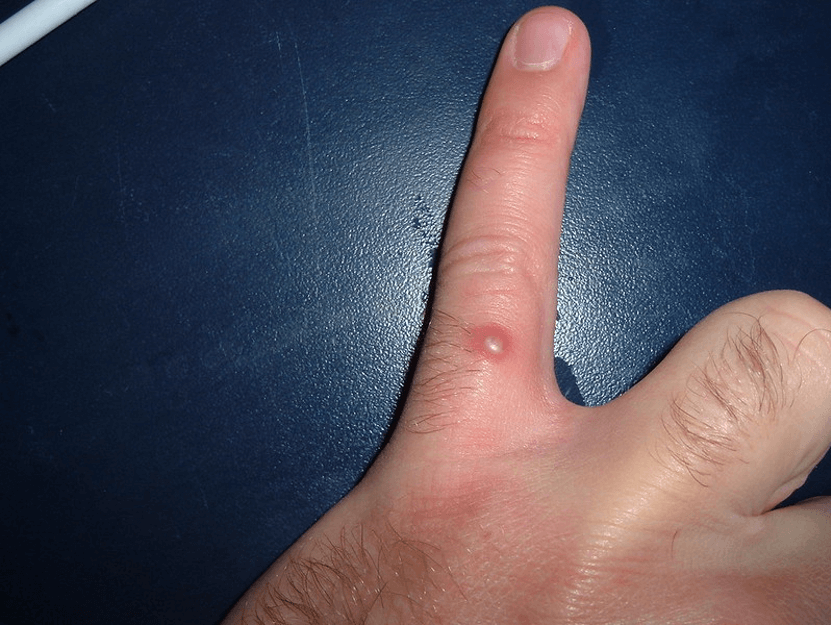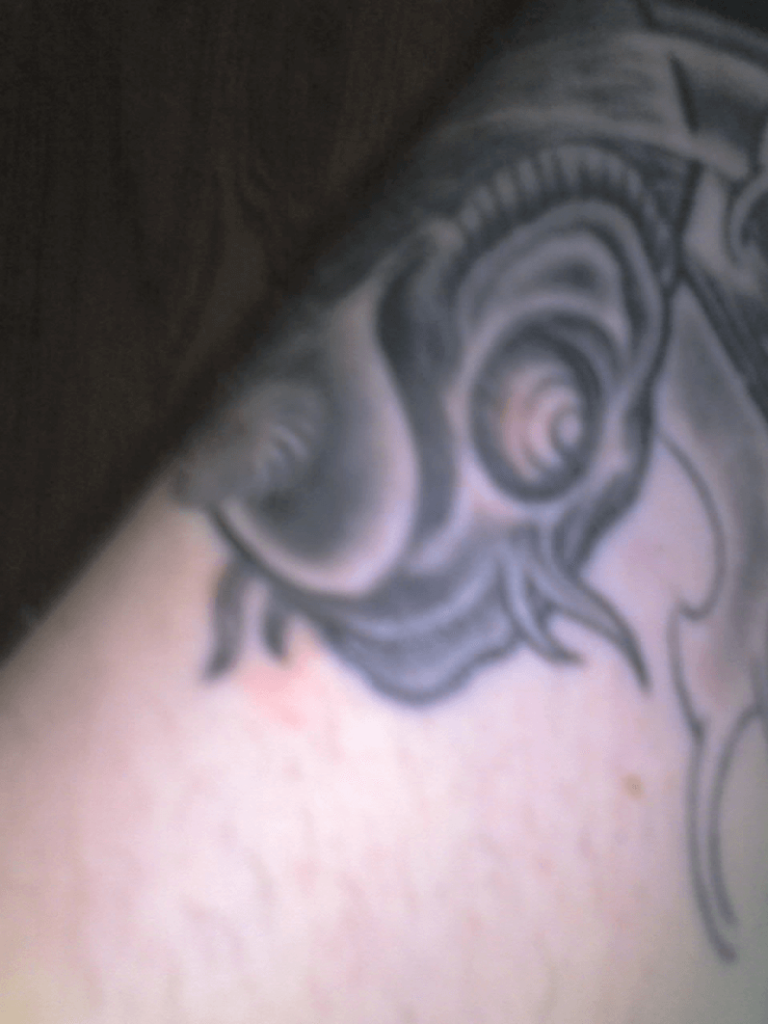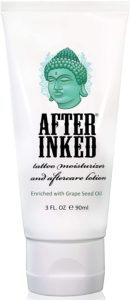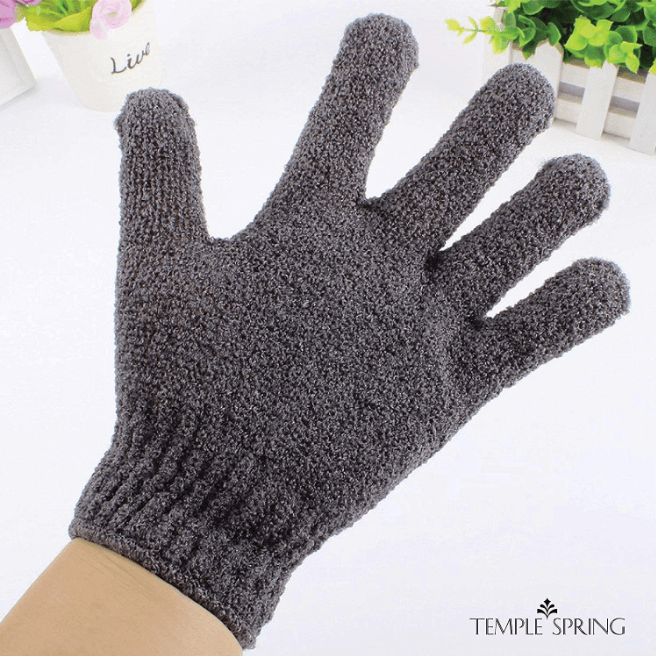Ingrown hairs happen all the time to lots of people, especially those who shave, wax or tweeze. It’s just one of those bumpy things that randomly appear on skin. But what’s it like on a new, healing tattoo? Is it painful? Can it damage your fresh tattoo? Should you panic? Or should you take it all in stride? Well, that’s what you’re going to find out today. So, scroll down to find out what happens with ingrown hair on tattoos.
Page Contents
But first, what are ingrown hairs?
Just like the name suggests, ingrown hairs are hair strands that don’t break the skin. Instead of growing outwards and breaking through the skin pore (like normal hair), ingrown hair tends to grow sideways and curve downwards (when it grows long enough).
They look similar to acne in appearance, but more often than not, you’ll see a bit of hair peeking just under the skin surface. That’s usually the easiest way to tell it apart from a pimple. Here’s an example:

Ingrown hair on little finger (Photo by Brett Vachon on Flickr)
As you can see in the picture, the pimple-like bump on the little finger has a slightly visible strand of hair trapped inside. You won’t see that on a pimple. So, that’s one way to know for sure you’re looking at ingrown hair, and not acne.
So, where do ingrown hairs usually appear?
Well, people with curly hair tend to have this condition. But anyone who shaves, plucks, or waxes can get ingrown hair. It’s pretty common in body parts we like to keep hair-free.
- For men, this can include the face (beard area) and the head (especially for balding guys who like to shave).
- For women, the most common places for ingrown hair are in the underarms, legs, and pubic area.
Check out this before-and-after Instagram image of ingrown hair that got treated by laser:
Why do ingrown hairs appear on tattoos? What causes it?
So, prior to getting inked, your tattooist will be shaving the area to clear their working space. This makes it easy for them to see what they’re doing. The fewer obstacles there are, the better your tattoo is going to turn out!
Tattooing does get messy, especially for larger tattoos. Your tattooist will be wiping blood and ink off your skin repeatedly, and having hairs in there can only slow down the entire process.
Some people are just predisposed to it
Your racial and genetic background may make you more susceptible to ingrown hair. As mentioned earlier in this article, if you’ve got curly hair, then you’re likely to get more than a few!
Shaving technique
For others, it may be due to the shaving technique – some tattooists prefer to dry shave. Unfortunately, this shaving technique can cause irritation, razor burn, and eventually, razor bumps (a.k.a. ingrown hair) when the hair grows back.
Here’s what happens when the hairs grow back…
Some hair strands poke the skin from underneath instead of growing out through the pores. Since the hair isn’t strong enough to create an opening in the skin, it has no choice but to grow inwards. This causes a reaction from your immune system. It now thinks the stray hair is a foreign invader, and it makes the area red and inflamed. Occasionally, there’ll be pus involved as well.
An alternative scenario is the skin got clogged with dead skin cells. This prevents the hair from growing out of the blocked pore. Instead, the hair grows sideways, thus causing it to become ingrown.
Here’s a video with useful illustrations to help you understand ingrown hairs and how they form:
Why you shouldn’t remove ingrown hair from a healing tattoo
It’s going to be tough if you find yourself in this situation. First of all, your tattoo’s most likely already itchy even without the ingrown hair. But add an itchy (and sometimes painful) ingrown hair, and you’ve got a recipe for disaster. Well, not if you can control yourself!
In times like these, you need lots of patience and self-control to stop yourself from scratching and removing that errant hair. Touching and disturbing the area can lead to even more inflammation and irritation.
That said, you shouldn’t attempt to remove ingrown hair from a healing tattoo. In all likelihood, it’s not going to interfere with the healing process. So, try your best to leave it alone.

Can you spot the 2 ingrown hairs on the tattoo? (Photo by fuzzz on Flickr)
Here’s what could go wrong if you attempt to pluck, squeeze, or shave the hair:
- You could introduce an infection
Removing the hair will result to another gaping (albeit tiny) hole in your skin. Depending on what you used to remove the hair, it may introduce bacteria and germs to the site which can cause an infection.
- You could cause scarring
Yes, it’s possible to get scars from ingrown hair removal. And it’s definitely not going to look good on top of a brand-new tattoo.
- You can delay the tattoo healing process
Ideally, you want the tattoo to heal as fast as possible. Depending on the size of the tattoo and your immune system, it can take anywhere from 2-4 weeks for skin to heal on the surface. And forcibly removing ingrown hair can push back that much-awaited day.
How to treat ingrown hairs on a tattoo
Since you shouldn’t remove ingrown hairs on a healing tattoo, what else can you do to remedy or treat the problem?
Well, not much, really. Just go about your usual tattoo aftercare regimen – cleaning and moisturising the area. And the ingrown hair should clear up and go away on its own after a few days.
For old and fully healed tattoos, however, you’re free to remove the hair all you like. If you haven’t tried removing one before, I promise it’s going to feel great afterwards!
Here’s a video clip showing how you can safely remove ingrown hairs:
How to prevent ingrown hairs on a tattoo
You may not be able to totally stop ingrown hairs from making an appearance on your tattoo. But these tips should help minimise the occurrence:
- Use the right shaving technique
Knowing how to shave the tattoo area properly is key to an ingrown hair-free tattoo. For instance, dry shaving can be problematic for many people. It can irritate the skin, cause razor burn, and promote ingrown hair.
It’s recommended to hydrate the skin before shaving to make the skin more supple. Also, when shaving it’s best to use a shaving gel or foam to protect the skin and make the razor blades glide more smoothly.
Here’s a tattoo care tips video from Gillette showing you how you can shave over a tattoo:
- Exfoliate regularly
As I’ve mentioned earlier, clogged pores are a leading cause of ingrown hair. To combat this, you should exfoliate your skin regularly to remove all the dead skin cells on the surface. Exfoliating also has added benefits of improving your skin’s appearance and increasing blood circulation as well.
That said, there are basically two ways you can exfoliate your skin: physical and chemical exfoliation.
Physical (or mechanical) exfoliation involves the use of accessories like exfoliating sponges, brushes, gloves, and scrubs. On the other hand, chemical exfoliation involves the use of acids like alpha-hydroxy acids (AHA’s) and beta-hydroxy acids (BHA’s) to peel the skin.
Depending on where your tattoo is, you may need to do more research on the best type of exfoliating product to use on your skin. After all, skin thickness varies from one body part to another.
For the most part, however, you can’t go wrong with a pair of exfoliating wash gloves that you can use in the shower. Check out Temple Spring’s affordable, eco-friendly, microfibre glove on Amazon (click on picture to buy):
- Don’t put on a thick layer of healing ointment or lotion on a healing tattoo
If you’re dry healing, you can totally skip this section. But if you’re not, then you should ensure only a thin layer goes on your skin.
So, in the early healing stages when your tattoo is still ‘weeping,’ a thin layer of Aquaphor, A+D Ointment, or Hustle Butter will do. (Please avoid using Vaseline as this is pure petroleum jelly and will definitely block your pores).
When you get past the weeping stage, you can start applying some moisturising lotion to the area (we recommend After Inked Vegan Tattoo Aftercare Lotion – it’s the best non-greasy tattoo lotion on the market right now!). Here’s what it looks like:

Again, make sure only a thin layer goes on your skin, just enough to moisturise the skin, but not block the pores.
Frequently asked questions about ingrown hair on tattoos
- Can ingrown hairs ruin a tattoo?
No, ingrown hair won’t ruin a tattoo as long as you leave it alone. Wait for it to clear up on its own. Then once your tattoo’s all healed up, you can go to town removing any ingrown hairs that grow over it!
- Is folliculitis the same as ingrown hair? Can it affect my tattoo?
Hair grows from the hair follicle. Folliculitis occurs when the hair follicle becomes infected. An ingrown hair is not an infection. But if germs and bacteria get into the follicle and infect it, then it can progress to folliculitis.
- Will hair grow back over my tattoo?
Yes, of course. Tattooing doesn’t kill off the hair follicle. Tattoo ink is only deposited at the dermis level, the hair follicle is situated at a deeper level. This means the hair is going to grow back. Hopefully, when it does grow back it won’t be ingrown.
- When can you shave over a tattoo?
Well, definitely not while your tattoo’s still unhealed (it will be tantamount to opening a can of worms with all the skin problems you might encounter)! I know the stubble is going to look unsightly for a few weeks, but leave it be if you want your skin art to look good forever.
Once your tattoo is all healed up, then you can go back to shaving the area as you normally would. Just make sure you follow the tips we’ve shared above – hydrate your skin, use a shaving gel, and moisturise afterwards. It will help prevent ingrown hair and keep your tattoo looking good as well!
- What about waxing or epilating? Can I do that on tattooed skin?
Of course, you can do all sorts of hair removal techniques as long as it’s done on fully healed tattoos. Either waxing or epilating would be painful, but hair does grow back a bit slower compared to shaving.
It’s all about your personal preference, really, and your pain threshold. Though I imagine, since you chose to get a tattoo, the pain brought about by an epilator or hot wax won’t be a big deal for you!
Conclusion
Ingrown hair on tattoo isn’t as bad as it sounds. It won’t harm your fresh tattoo as long as you leave it alone. I know it’s much harder than it sounds. But I promise your tattoo is going to fare so much better if you resist the temptation to pluck or squeeze that errant strand of hair!

